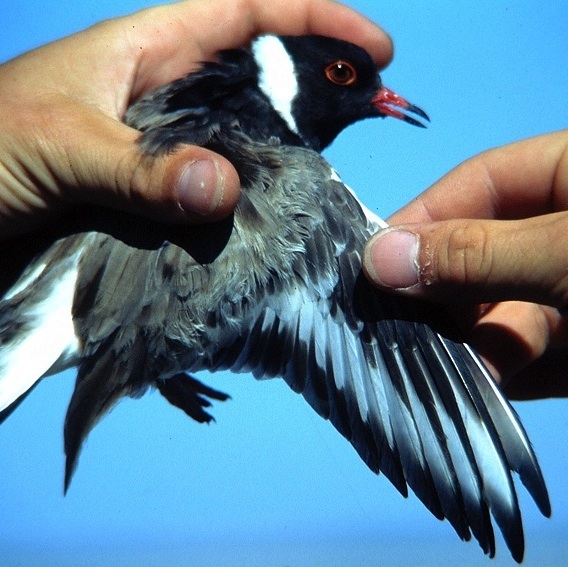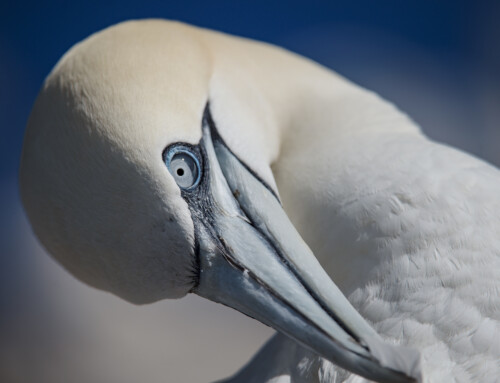LINKED PAPER
Prolonged and flexible primary moult overlaps extensively with breeding in beach-nesting Hooded Plovers Thinornis rubricollis. Rogers, K.G, Rogers, D.I. & Weston, M.A. IBIS 156: 840-849. DOI: 10.1111/ibi.12184
Birds face some big energetic challenges in their lives including moulting (the process in which they regularly replace all their plumage), breeding, and for some species, migration. It is not surprising that annual cycles of birds have evolved to avoid overlap of these energetically demanding but essential processes. Studies of moult from birds throughout the world have shown that for most non-migratory birds, moult occurs after breeding – so pervasive is this pattern that the term ‘post-breeding moult’ is commonly used by ornithologists. Overlap between the end of breeding and start of moult is not uncommon in birds, but complete overlap of breeding and moult is rare. Flight feather moult is usually sandwiched between energetically costly periods (e.g. breeding, migration or the onset of winter), so it is usually a fairly discrete event lasting ~1-3 months. Extended primary moults have been reported mainly in species that are very large (and thus have to grow a lot of feather material) or those that live in arid regions.
However, as we captured and studied resident Hooded Plovers Thinornis rubricollis, on temperate ocean beaches of south-eastern Australia, these ‘rules’ began to unravel. The Hooded Plover population started moulting their primary feathers (the main flight feathers on the wing) about the time breeding began, and moult continued throughout the extended but seasonal breeding period. Many individual birds of both sexes were moulting and breeding at the same time. So, we had a regular, seasonal overlap between breeding and moulting!
We examined how the plovers achieved this overlap. Firstly, the timing of primary moult was estimated and the unusually extended duration (170 days for females; 210 days for males), was apparently the longest recorded for shorebirds – so moult was slow. Females moulted significantly faster than males, and showed less extensive overlap of moult and breeding. Examination of the sequence of feather replacement (i.e. the possible patterns of feather loss and regrowth that progressed moult in a wing) indicated that moults fell on one of two alternative sequences. The first (“fast”) had more feathers growing at the same time, the second (“slow”) had fewer feathers growing at any one time. The sequences also overlapped in places, suggesting birds could change between “fast” and “slow” sequences, akin to changing gears in a car (higher gears produce more speed but burn more fuel per unit time). Indeed, some birds were found to have “changed gears” of moult during a breeding season. So, moult was flexible! Again, this seems new for birds, with the few species studied apparently generally using a single sequence of feather replacement.

Photo images
All images © Mike Weston





